We have the technology
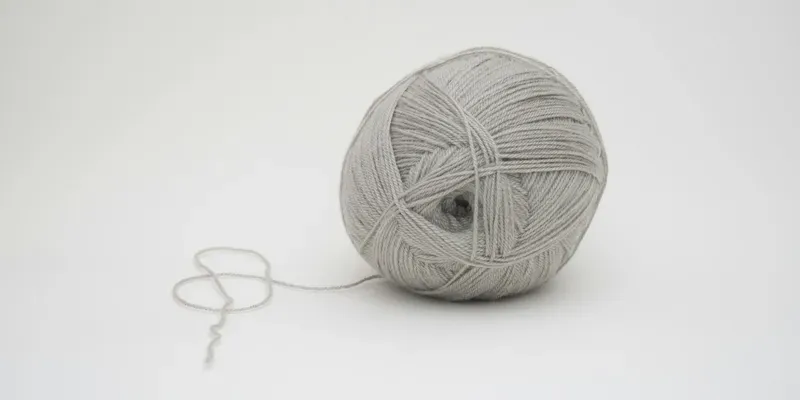
Regular readers of a certain age may remember a TV series entitled the Six Million Dollar Man, or its sister series, The Bionic Woman.
In those days that seemed like an enormous amount of money (and probably still does for anyone earning a living from beekeeping).
Six million dollars 50 years ago is equivalent to about $46.5 M these days (which would make for a much less snappy title). Had it been £6 M, the additional inflation the UK has 'enjoyed' since the early 70's corresponds to almost £95 M in 2024.
All of that bionic technology is expensive.
The opening catchphrase to the Six Million Dollar Man was "We can rebuild him, we have the technology" {{1}}, the second part of which ('We have the technology') is often heard {{2}}) when commenting favourably about any new innovation.
And one of the things that characterises many of our hobbies and pastimes {{3}} is the unrelenting technological 'improvements' that make us faster, better, quieter, more accurate, or whatever quality might be considered important by the advertisers and suppliers ... and presumably by at least some of the participants.
'We have the technology'
I am (or have been) an enthusiastic hillwalker, cyclist and fly fisherman. Every year there are new waterproof fabrics, 'tactical' clothing {{4}}, technical improvements, carbon-fibre composite bike frames or fly-rods or walking poles ... a cornucopia of must-haves that are guaranteed to improve the enjoyment of my chosen hobby.
I realise {{5}} that 98% of this just is marketing hype.
Modern top-of-the-range fly rods aren't fundamentally different to the mid-range 'fishing poles' I purchased, or built, two or three decades ago. Although they are ten times the price, they won't make me cast better, or catch bigger fish.
Or catch any fish.
Similarly, my legs, general lack of fitness, and aversion to steep hills are the rate-limiting steps in being able to cycle faster or further ... and, anyway, I'd prefer to potter, get a coffee somewhere, marvel at the view, take some photos and then go home.

Preferably freewheeling.
But, it seems to me, beekeeping is not like this.
Although I struggle to find wheels to fit my ageing mountain bike {{6}}, I could probably still use L.L. Langstroth's smoker, hive tool, hives and extractor from the 19th Century.
And they'd likely be compatible with equipment I currently use (if I used Langstroth hives).
The fundamentals of beekeeping are the same as they've been for almost two centuries. The basic equipment used by the majority of beekeepers has remained largely unchanged for many, many decades. Where technological 'improvements' have been introduced, they make little impact on the principles and practice of our pastime.
Why is this?
The bees and the beekeeper
Whatever the opposite of an expert in the history of beekeeping is ... that's me. If you want to know about the evolution of the removable frame hive, read something by Eva Crane, Michael Bush, Rusty Burlew, Wyatt Mangum or Peter Borst.
Irrespective of the history, I suspect the main reasons the majority of beekeeping equipment has remained largely unchanged is due to the restrictive needs of the bees and the beekeeper.
The bees need a secure and weathertight void in which to build their nest. Evolution dictates the 'bee space' needed around the removable frames. This, coupled with the size and number of frames, defines the basic dimensions of the hive.
Yes, there are variations in the latter, either resulting from the vagaries of history, or designed to accommodate more prolific or productive bees, but the basic conformation of a hive has been largely unchanged for almost two centuries.
There have been developments in the material that some hives are made from (about half my hives are now polystyrene), but does this make a fundamental difference to the health or productivity of the bees? {{7}}
The beekeeper's needs are slightly more nuanced. She needs boxes that can be lifted when full (of bees or honey), that fit together properly, and that are affordable. These boxes need to be robust enough to take the knocks and bumps of everyday use, easy to clean, and - perhaps most importantly from the second year onwards - compatible with other boxes that are already owned, or may be purchased in the future.
A blessing and a curse
A brood box constructed from a rigid carbon fibre and kevlar shell enclosing a super-insulating polystyrene core, with deeply recessed handholds to make lifting easy and sufficient thickness to provide the insulation properties of a centuries-old oak, might provide a great environment for the bees ... but you couldn't afford it, and it would be incompatible with any other equipment.
This need for compatibility - with queen excluders, supers, roofs, floors etc. - is both a blessing and a curse.
It's a blessing because if the boxes are compatible, you can mix'n'match them at will, you can stack cedar on poly, or homemade on purchased, or new boxes on those you inherited from your grandfather in 1957 (who got them secondhand).
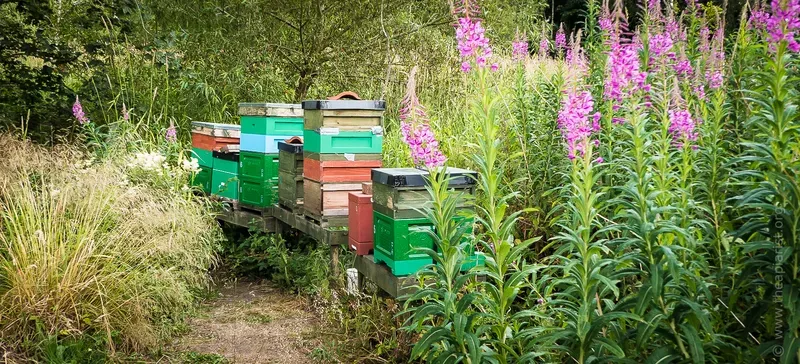
It's a curse because it inevitably restricts development of new and improved hives. Furthermore, it's not just a case of designing a new box, it's a complete 'system' that's needed {{8}}. And if that system is incompatible with existing equipment it's potential market share is limited.
The newest Abelo hives have a 'lip' at the interface of the boxes, defining (and restricting) the types of supers and queen excluders, floors and crownboards that fit.
I'm sure they are perfectly fine hives, but it feels more like an 'improvement' needed by the seller rather than the buyer. I've not bought one (and won't) and I've only seen one in use in an apiary ... surrounded by a motley collection of - otherwise compatible - cedar and poly boxes from a variety of manufacturers.
Is this 'lip' an improvement?
I don't know. My bees seal the interface between boxes with propolis and I've never had boxes slide apart laterally.
'Nuff said.
Is new technology better?
More generally, are any modern variants of the tried and trusted classic beekeeping equipment actually better?
Here are a few 'we have the technology' hits and misses (in my - pedantically biased - opinion).
Floors
I've only really ever used open mesh floors (OMF), so have little to compare them with. On the few occasions I have used solid floors, I've not seen a meaningful difference between colony 'performance' (however you'd like to define that), either for better or worse.
Clearly the OMF allows hive debris and Varroa to 'escape'. Whilst the latter may be beneficial, the natural mite drop is only a fraction of the total mite population, so it probably has little beneficial impact overall.
What about the other hive debris?
What about efficient thermoregulation?
A decade ago I'd have said it doesn't matter, but I'm a little less certain now.
The evolutionary preference of swarms for solid-floored bait hives suggests that this is an important consideration in the choice of nest site. However, it might be nothing to do with thermoregulation {{9}}, but it's something I'm thinking about. In addition, the increasing evidence that the gut microbiome influences identity suggests to me that the internal environment of the hive - therefore the 'stuff' that the bees daily come into contact with - may not be best reproduced with an open floor.
It's best to keep an open mind, though perhaps not an open floor.
What about the entrance?
I like 'underfloor entrance'-type floors, at least during the spring, summer and autumn. They provide good protection against wasps and are easy (or, easier) for the bees to defend against other robbing bees. In the winter this protection extends to mice, who cannot negotiate the L-shaped entrance tunnel, so no mouseguard is needed (in itself a benefit).
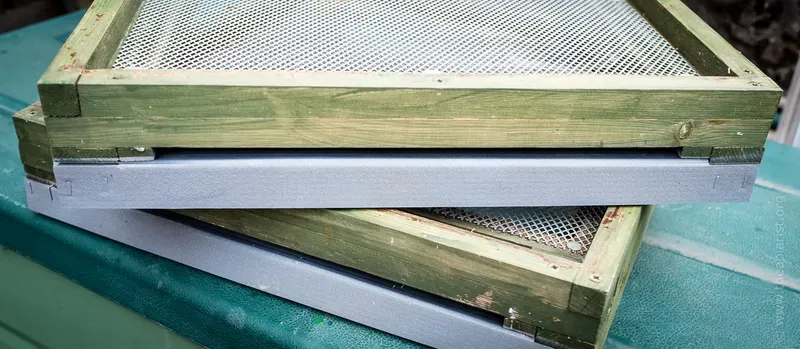
However, big colonies which experience a high attrition rate of workers during the winter - perhaps because Varroa and virus levels have been poorly managed - can result in the L-shaped entrance tunnel getting blocked with corpses.
As entrances, they work well, but vigilance is needed.
Note ... rather than miss out on the benefits of these underfloor entrances, it's better to properly minimise mite and virus levels using rational Varroa control.
Broods and supers
I'm more than happy to mix'n'match broods and supers made from cedar or poly ... as long as there's no lip, overhang or whatever to restrict compatibility.
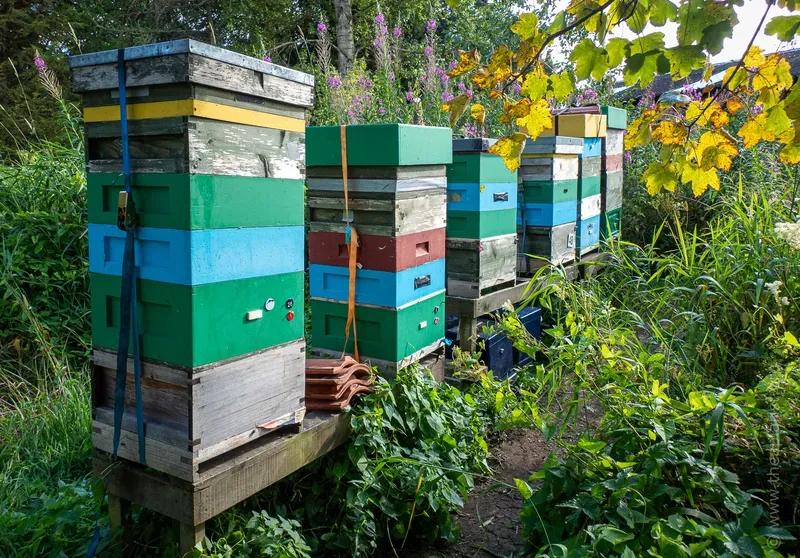
In my experience my Abelo poly boxes are pretty good. Lightweight, pre-painted, hideously colourful, weather-resistant, reasonably robust etc. Perhaps their major fault is that they are slightly too small to accommodate 11 frames and a dummy board. This is usually manageable, but if your bees produce lots of propolis then things can get tight.
After lifting ~30 full supers on Tuesday I'd add that the handhold recesses on the Abelo boxes are too shallow and - because they slope - much less easy to grip (particularly when damp) than the chunky square ones on a cedar super.
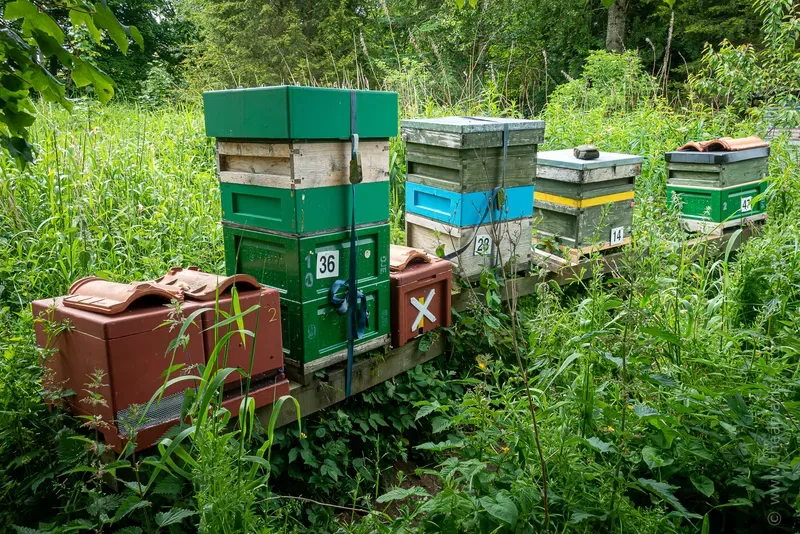

Handholds
The Swienty poly boxes only take 10 frames {{10}} but the bees seem to do really well in them.
Is it that they're better insulated, or do they just look as though the bees are doing better because they are 91% the volume of a standard National box?
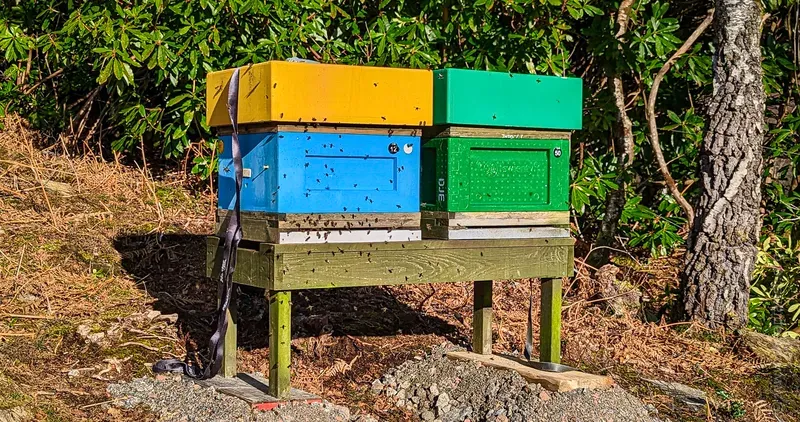
However, the big failing of the Swienty brood boxes is the lack of a rebate on the bottom of the side and endwalls. This means the upper box of a double-brooded hive gets thoroughly propolised to the tops of the lugs of the frames in the box below.
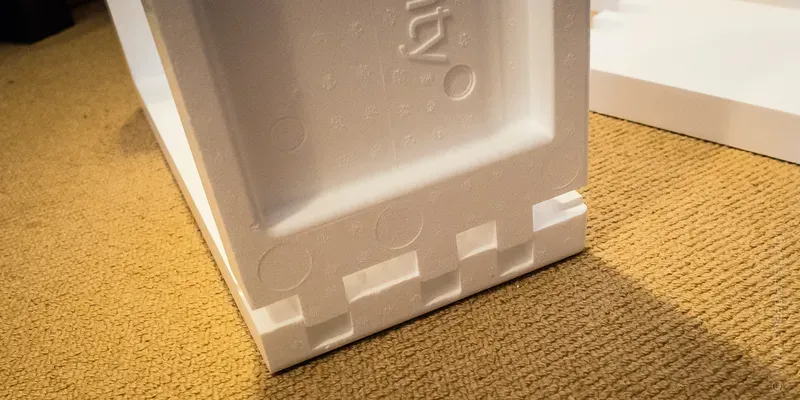
As individual boxes, they're great. As double broods they are infuriating ... both because of the propolis and (when stacked on an 11 frame box) because of the frame spacing.
Queen excluders
I don't think there are any queen excluders better than a wooden-framed, rigid wired excluder.
The new-technology plastic versions are all - in one way or another - poor. They crack or warp, are a pain to clean, stick to the top bars etc.
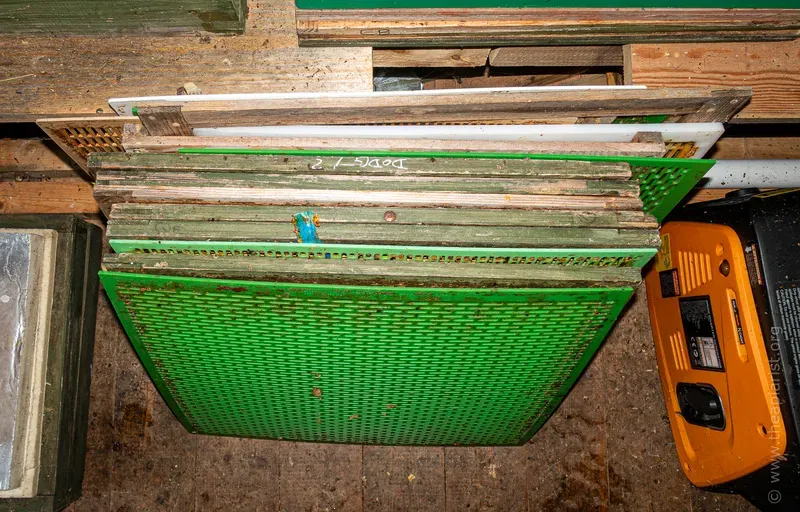
Zinc excluders bend or - worse - crease, ping loose when prising them up (flinging bees everywhere), and stick just as resolutely to the top bars as the worst of the plastic excluders.
Buy once, buy the best, briefly wince at the price, but never think about queen excluders again 😉.
Roofs
Here's one area where technology has improved things {{11}}. The equally hideously-coloured Abelo roofs are lightweight, strong, deep-sided, totally weatherproof and insulating. I still usually have a block of Kingspan underneath them, but I think they are a marked improvement on the standard metal-topped, cedar sided roof used for generations.
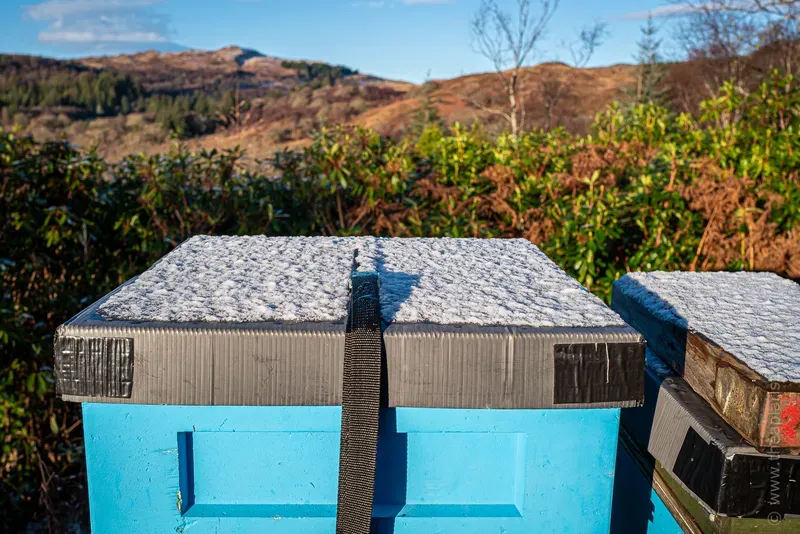
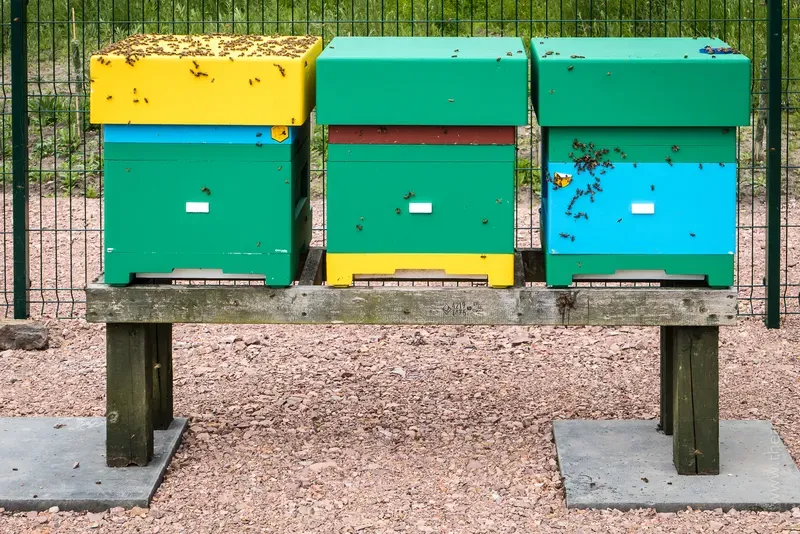
Correx and Abelo roofs
At the other end of the price spectrum, I remain a big fan of folded Correx roofs ... 'cheap as chips', impervious to the weather and really useful, both for covering hives and stacks of boxes, for cleared supers, or stopping drips from ruining the car upholstery.
Neither roof reacts well to a hot smoker 😢.
Mini-nucs
These are another example where some of the newer variants are probably better. Better that is, if you depend upon mini-nucs for your queen mating. I've written about these relatively recently so won't repeat myself.
Those who have used them speak favourably of the new(ish) Mini-Plus style hives. However, those already invested in smaller Kieler or Apidea's might baulk at the additional cost and the incompatibility of the frames - with either existing mini-nucs or larger hives.
It's worth noting that compatibility is far less of an issue with nucleus hives overall as they tend to be used individually, rather than stacked or mixed with parts from other manufacturers.
Partly for this reason, there have probably been more technological developments in new designs of nucleus hives than any other over the last couple of decades.
Smokers
I see that a few suppliers are selling 'electric' smokers.
Has anyone used one? Are they better?
I'd prefer to carry a blowtorch to relight my smoker than a spare battery ... or an extension lead.
I've seen a couple of unenthusiastic social media comments about these new-fangled smokers, but that's about all. I suspect they've not sold well ... and that's probably because a good smoker is a great example of optimised design and function.
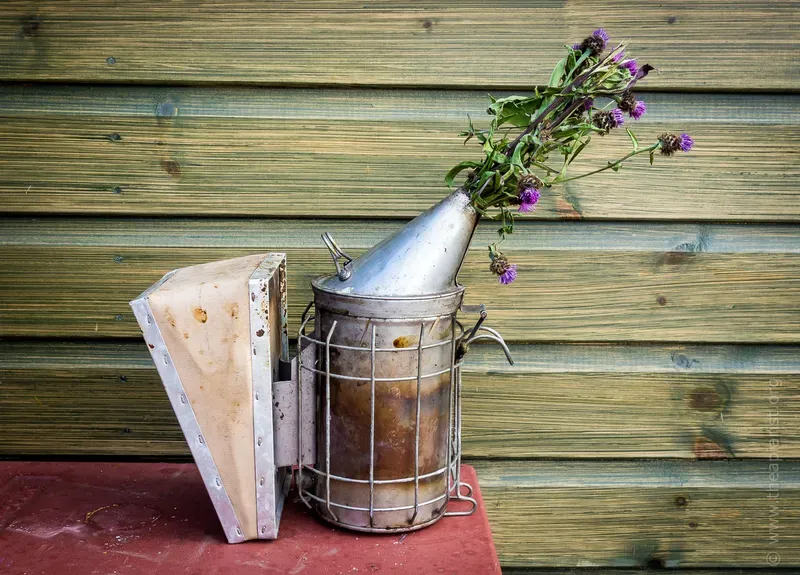
The large and small Dadant smokers {{12}} are excellent. They remain lit for ages, spare bellows and inserts are available and they should last years. Just don't back over them with the car 😉.
Hive tools
Periodically a new design in hive tools appears. I don't mean a subtle variation on the theme of a J tool, but something more radical ... cranked, L-shaped, palm rest, integrated bee brush or whatever.
Thorne's usually sell these off for a fiver in the sales a couple of years later.
Does this mean that the new 'technology' {{13}} is actually worse, or does it simply reflect that beekeepers are a conservative bunch?
I experienced a sort of Damascene conversion about hive tools a few years ago. I've always favoured the claw-type tool shown below.
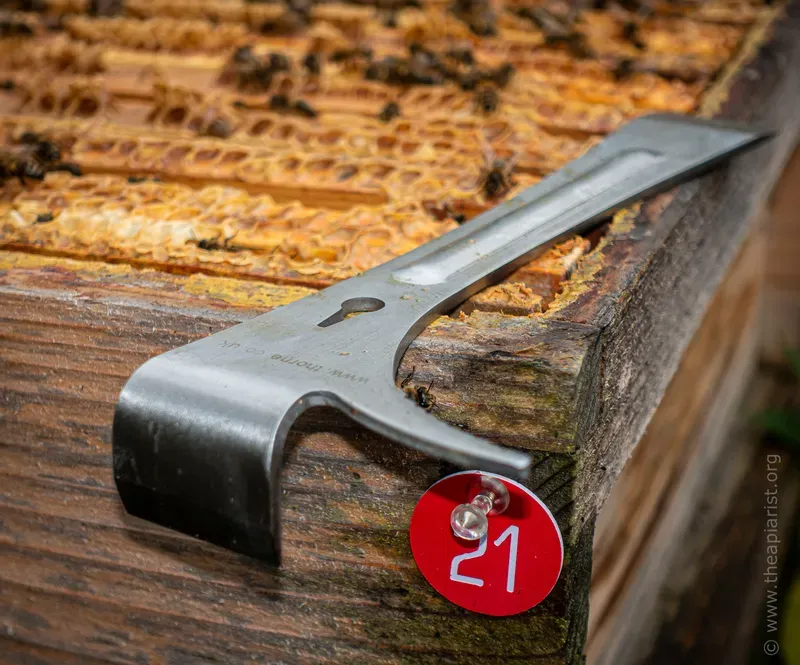
For years I purchased el cheapo steel copies during the annual beekeeping sales for £2 each. I reasoned that, since most were going to be lost in the long grass anyway, I'd save a few pounds by purchasing the cheapest I could source. I'd add five or ten to the end of my annual order to qualify for free postage {{14}}.
Then, one season, I either entered the wrong catalogue number, or the incorrect stock was picked from the shelf.
To my surprise I received ten premium quality claw hive tools ... they were lovely, and I've rarely used anything else since.
I've also lost fewer of them {{15}}.
Each costs about six times the price I was paying, but I consider it money well spent. They have lovely sharp bladed ends for scraping off burr comb and are immensely strong. I've also yet to bend one, which was a not uncommon occurrence with the cheap versions.
Bee suits
There have been some technological developments in bee suits over the last couple of decades, with some being better ventilated and/or impervious to stings.
This season I've needed better waterproofing, not ventilation.
As with beekeeping history, I'm unqualified to comment as I've never tried one of these new suits, or looked at them with much interest. I still mainly use the first bee suit I purchased (secondhand). It's been repaired a couple of times and will probably outlast me.
I'm no fashionista and, worn to the coffee shop to buy lunch it guarantees I'm socially distanced, but it provides more than enough protection for all but the most psychotic bees.
More protection simply insulates you from bees that really should be requeened or replaced.
Avoiding a problem does not solve the problem.
I've got a variety of similar suits and jackets, both normal and lightweight variants (in a range of unflattering colours and sizes), but the original one still bears the brunt of the work.
So bee suits are a case of the technology existing, but I certainly don't have it ... and question whether it's really necessary.
Peripherals
Are plastic frames and foundation better? I was tempted to try the latter this year for my heather honey, scraping them back to the mid-rib and then extracting in my hydropress. However, I'm aware they need near-ideal conditions to get drawn properly, so promptly shelved the idea.

The fruit press was a revelation (when compared with crush and strain), but it's hardly new technology. Manual versions have been used for fruit (and honey) for decades.
My SAF Natura radial extractor has an on/off switch and a manual speed control. It's worked faultlessly for years.
Newer extractors - at least those from the high-end manufacturers - include additional technology; timers, controllable acceleration and deceleration, LED lighting, internet connectivity and an accompanying 'app' for your smartphone {{16}}.
Is this new technology needed and used, or are they just yet more things to go wrong?
Benefits
I welcome the conservative nature of beekeeping, and the general lack of technological 'improvement' in most of the equipment we use. I think it makes things a lot easier for beginners (who still face a long and shallow learning curve), it reduces the overall cost of an increasingly expensive pastime, and it means that there's still a little residual value in the teetering piles of equipment hoarded by many experienced beekeepers.
It undoubtedly contributes to the sustainability of our hobby.
There's something reassuring about managing bees in the 21st Century using essentially the same equipment that were used in the 19th Century.
The internet
A century ago, if you wanted to know something about bees or beekeeping, you'd ask your neighbour (who also kept bees) or perhaps read a book on the topic.
With the increase in popularity of our obsession, and increasing membership of beekeeping associations, you could ask for help from fellow enthusiasts.
You'd ask a simple question, get six answers from four beekeepers, have a minor disagreement about top or bottom bee-space and then either, a) do what you'd first thought anyway, or b) create some nightmarish hybrid from the contradictory answers you received and subsequently wonder why the hive swarmed.
But the advent of internet technology made matters worse changed all that.
There's now a huge volume of information available though - reassuringly - lots of it is still contradictory.
On the forums, you can now ask thousands of beekeepers, scattered all over the globe in different time zones and even different hemispheres, the same question.
Most won't answer (thankfully) but enough will that it's impossible to get agreement on any topic (perhaps other than the outrageous price of Api-Bioxal).
In addition to the odd argument - usually a little more heated online than in-person - about bee-space or brood and a half, you'll also 'benefit' from the opinions of arrogant know-it-alls who tell you nothing (other than 'work it out yourself, like I did'), or woefully inexperienced practitioners that have yet to topple down the precipitous scarp slope of their Dunning-Kruger curve.
Has internet technology improved beekeeping?
Discussing a profoundly practical and locality-dependent problem with someone on the other side of the world might be beneficial. However, I can't help thinking that the combination of good observation, a little thought and a chat with the chap who keeps bees a couple of fields away might not be better.
All of which might seem a little ironic coming from someone who writes about beekeeping, and is read (or at least accessed) from all over the world ... different time zones and hemispheres.
But, having moved house last week, I find that I am no longer on the technology information superhighway. The new house appears to be connected to the world wide web by a long piece of damp, very frayed wool.
Overnight I've gone from a 900 Mbps connection to a shonky 1.3 Mbps (if I'm lucky). This explains why this post is perhaps even less well researched than normal, and why it took 77 hours to write 😔.
I'm sat in the car, overlooking the valley below, with my mobile providing intermittent, and v e r y s l o w, internet access to upload the pictures and schedule the post.
I'm assured that 'normal service will be resumed shortly' but I remain sceptical ... as I am about quite a bit of this new-fangled technology.
Sponsor The Apiarist
This site exists thanks to hundreds of late nights and the caffeine content of "double-shot" cappucino's. If this, or other, posts has helped or inspired your beekeeping, or was amusing (yes, really!) or enlightening, then please consider sponsoring The Apiarist. Sponsorship costs less than £1/week. Sponsors receive the weekly posts, an irregular monthly newsletter, and an increasing number of sponsor-only content ... those starred ⭐ in the lists of posts.
Alternatively, help reduce my caffeine overdraft ... and please spread the word to encourage other beekeepers to subscribe.
Thank you.
Note
Why no mention of the Flow Hive? ... see compatibility above.
{{1}}: He'd been in a plane crash and they reconstructed him "with bionic implants that give him superhuman strength, speed and vision".
{{2}}: At least by those old enough to remember the - in retrospect rather cheesy - 70's TV series.
{{3}}: And employment, but I'll stick to the things we use our disposable income on in this post.
{{4}}: WTF? Tactical? It sounds like I'm going into battle rather than trudging up a hill in the rain.
{{5}}: Belatedly, if you were to look in my garage 😢.
{{6}}: Wheel diameters and axle lengths have changed over the last 30 years.
{{7}}: Some consider we are causing untold stress to colonies by continuing to use 'thin' wooden hives. Perhaps ... but biological stress and anthropomorphic stress are two very different things, and there are millions of cedar hives still in use in which the bees thrive, overwinter well and produce bumper honey crops.
{{8}}: A 'tactical' or 'technical' beekeeping system?! 😱
{{9}}: Instead, it might be a consequence of the ways bees determine the volume of the void, or result from their preference for a dark space, or whatever ...
{{10}}: All these comments relate to National hives ... if you use Langstroth's you'll need to do your own research.
{{11}}: Remember, in my biased opinion.
{{12}}: Other makes are available, but buy the biggest possible ... they are easier to light, easier to keep alight, and they remain alight for longer.
{{13}}: It's hardly technology ... it's a bent piece of metal that's used to lever out frames and separate propolised boxes.
{{14}}: Beekeepers may or may not be conservative, but this one is mean careful with his honey "profits" (is honey profits an oxymoron, like military intelligence?).
{{15}}: Interesting ... do I drop them less frequently or exert more effort trying to find them if dropped?
{{16}}: OK, some of that might be fiction ... it's late and I've still got to get through the final couple of paragraphs. For all I know, these things might actually exist.

Join the discussion ...